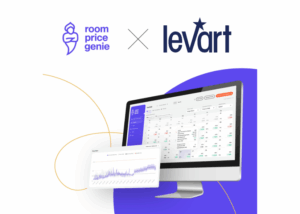Is managing your rates getting overwhelming? It doesn’t have to be! We can show you how to easily adjust and control your online rates and make the most of the advanced rate management software systems currently available. Independent operators increasingly look to systems that automate rate management and eliminate repetitive manual tasks.
Direct rates vs OTA rates
Rate management is more than just how much you charge for each room, but also how and where you distribute these rates for guests to book. Having your inventory bookable through OTAs and other distribution partners is obviously a great way to access a large portion of the potential guest market, as well as increasing the awareness of your property.
Using a clever rate and distribution management system which allows you to set dynamic rates on your website and with online distribution partners gives you the power to influence where your guests find the best prices and are more likely to book your rooms.
If obtaining more commission-free direct bookings is your main goal, you have the ability to increase the rates being sent to OTAs, leaving your website as the cheapest location to book. This can work to convert comparison shoppers into direct bookings.
What about rate parity?
When managing your rates, it’s also worth considering rate parity between your individual distribution partners. Complications and even penalties from distribution partners can arise when there is diversity in rates for the same rooms, as online travel agents compete with one another for bookings.
To avoid rate parity issues, we recommend sending the same rates to all online travel agents that you have a distribution relationship with.
How can I automate my rates?
Simplify your rate management by using a distribution management system that allows for simple rate automation with base and derived rate functionality. Levart’s software will save you valuable time and effort, particularly when you want to do a bulk update for multiple rates to suit demand.
But how do derived rates actually work?
Base rates can be considered the standard or foundation rate for each room type, whereas derived rates are calculated automatically from the base rate. Derived rates are a really simple way to adjust your rates for longer stays, advanced purchase periods or to apply particular terms and conditions to a rate.
If your property offers a discounted rate for stays longer than 3 nights, you can easily create a derived rate that will calculate a discount from the base rate. For example, if the base rate is $200 per night, you can derive a 10% discount for bookings with a minimum length of stay (MLOS) of 3 nights. When a guest searches for availability for 3 or more nights, the derived rate will automatically display as $180 per night.
What are some other ways I can use derived rates?
The flexibility in the derived rate set up can also allow for the creation of rates with different terms and conditions to those typically applying to your other rate types. In light of the recent travel restrictions and uncertainty relating to COVID-19, derived rates can be generated to incorporate additional flexibility with your refunds and cancellations policy.
If your standard rate types are not fully refundable, you can create a rate derived at an additional 5% higher than the base rate that allows for refundable cancellations to give guests greater peace of mind. You maintain the control to choose exactly when these rates are available and when they expire and are no longer bookable by guests.
The same can apply if you wish to set up advanced purchase periods to offer discounts for bookings made a certain period ahead of time. Flexible management of derived rates means you can customise the restrictions and criteria which allow derived rates to be enabled and bookable by your guests.
If you wish to provide guests with a 5% discount when they book more than a month in advance of their intended stay, you can easily set these rules so that the discount will only be enabled and automatically applied if the guest searches more than 30 days in advance.
Derived rates are particularly useful for instantly updating multiple rates at once; making rate management with distribution partners far more efficient at the same time as reducing the likelihood of calculation errors.
How can I adjust my rates to suit demand?
An empty hotel room equals lost revenue. Specials and discounted rates can be a great way to minimise room vacancies during times of lower demand. Encouraging longer stays through stay x pay y type discounts with minimum length of stay (MLOS) restrictions can help to increase occupancy levels.
But, at the same time offering last minute discounts on shorter stays can help fill in vacancy gaps. And remember, derived rates are your friend here!
How can I make special rates for loyal guests or public promotions?
Having loyal guests is a big bonus, and rewarding them with exclusive, automated discounts will cut out the hassle and keep them booking at your property. Offering unique client logins which access exclusive discounts at the time of booking allows you to treat loyal guests in an efficient and personalised way through essentially password protected rates.
Sometimes you might want to run public promotions advertised and exclusively bookable through your email campaigns and social media marketing strategies. This is extremely simple through the creation of promo codes, which apply a unique discounted rate at the time of booking if any restrictions and rules are met.
The same applies for specials, promotions and extra inclusions used to incentivise direct bookings for guests. An automatic pop-up on your website highlighting the benefits of booking direct can use similar promo code functionality, allowing guests to access discounts and extras when they subscribe to the property membership database.
This can work to encourage direct bookings, as well as build your email membership database for future marketing strategies.



